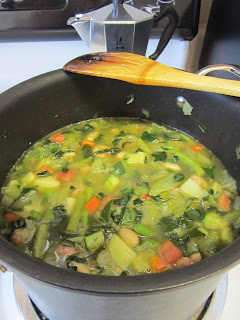 |
| Replica of Michelangelo's David, in Piazzale Michelangelo |
I take issue with this claim.
First of all, David is not the only piece of sculpture in the entire gallery. Granted, it is the largest and most well-known, but there are other pieces in the gallery to view.
Regardless of that fact, I would pay 6.50 euro to just view David. The replicas are similar, and there are an abundance of them in Florence, but they do not compare to laying your eyes on this massive piece of art. The white marble is brilliant. The stare of David gives you goosebumps (at least it did for me).
When you enter the gallery, you'll see him there. There he is. Standing so tall at the end of the hallway as you walk in. He is beautiful.
As you walk closer, you can see details, such as veins in his hands and feet. His skin - so smooth and white.
Then you think to yourself: this is a sculpture by Michelangelo. THE MICHELANGELO! Now you can understand why the man was and is considered one of the best (if not the best) artists of all time. Looking at David, you're looking at a man. You don't see that he was once just a large piece of marble. There really isn't any indication that he was chiseled from anything. There are no marks on his body (except on his foot...thanks to some lunatic who attacked him with a hammer back in 1991). His skin is as smooth as a baby's.
You could easily stand there and stare at him for an hour. It's as if he is a magnet for your eyes. You try to take it all in, but in a way it is almost overwhelming.
Some interesting facts about David: Michelangelo was 26 years old when he got the job to sculpt David. It took him a little over 2 years to finish. Originally, he was to be placed on the roof of the Duomo, along with 11 other Old Testament figures. However, due to the 6 ton weight of the sculpture, and the fact that the other planned sculptures never really happened (except for one by Donatello, that was eventually lost in the 18th century), the powers that be (of which included such illustrious folk as Leonardo Da Vinci and Sandro Botticelli) decided to bag the idea and ended up placing him at the entrance to the Palazzo della Signoria. He was removed from that spot in 1873 and has been at L'Accademia ever since.
Unfortunately, there is no photography allowed in the gallery (which is why I only have one photo of a replica in this post). As a matter of fact, when we visited last April, someone walking behind us with a camera was yelled at by a woman who worked there, "NO PHOTO!" Boo. I would have loved to snap 100 pictures of him. (You can, however, purchase photos, posters, books, postcards, etc in the gift shop)
So please...if you visit Florence...take some time to stop in and say hello to David. You won't regret it.
















































